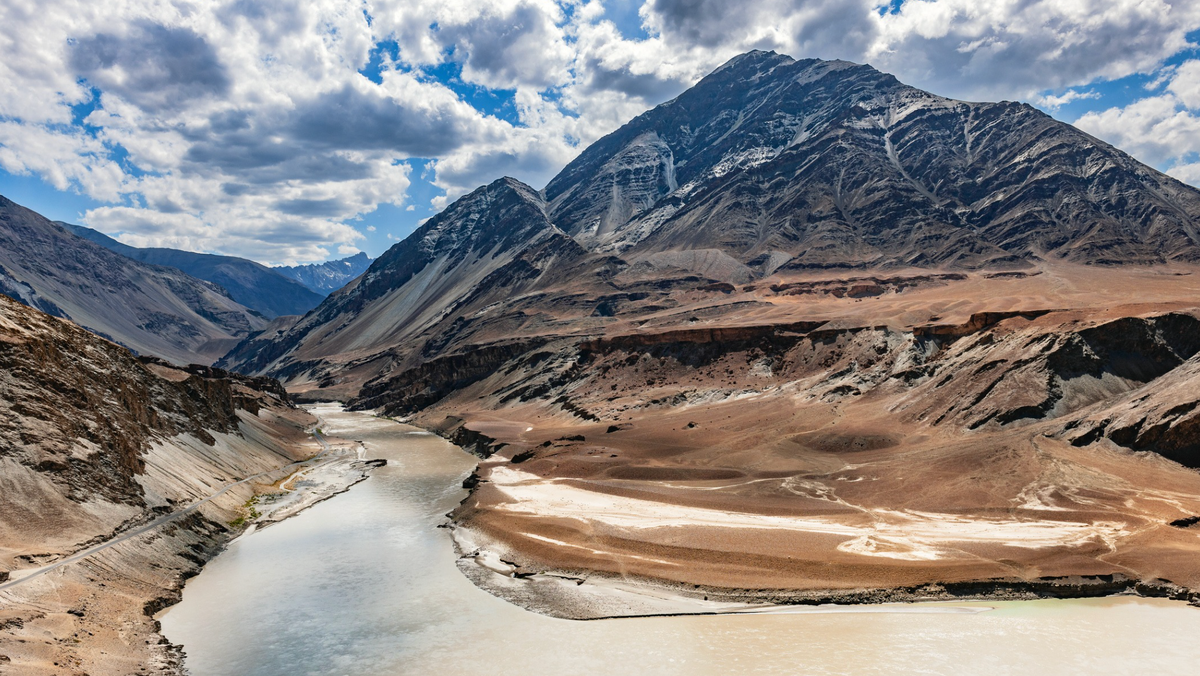Indus Valley Civilisation: National Capability Assessment in its Bronze Age Context
An urban powerhouse of the Bronze Age, the Indus Valley Civilisation blended advanced city planning, economic integration, and cultural cohesion to create one of history’s most sophisticated and enigmatic ancient societies.

Hard capabilities. The Indus Valley excelled in urban planning, hydraulic engineering, and standardisation of measures. Its cities were among the most advanced in the ancient world, though evidence of militarisation is minimal compared to contemporaries.
Soft capabilities. A remarkably cohesive material culture, standardised weights and measures, and an undeciphered script suggest strong social organisation and information control. However, the lack of monumental inscriptions and clear evidence of centralised political authority makes the nature of governance less visible.
Economic capabilities. The civilisation sustained a diversified agrarian economy, sophisticated craft industries, and extensive trade links stretching to Mesopotamia, Central Asia, and the Persian Gulf. Its integrated urban economy was resilient, but vulnerable to environmental change and shifting river systems.
The Indus Valley Civilisation’s capability profile reveals a society that achieved exceptional levels of urban sophistication, technological precision, and economic integration for the Bronze Age. Its hard capabilities were expressed in meticulously planned cities, advanced sanitation systems, and durable infrastructure that placed public welfare and civic order at the centre of state priorities. Unlike many of its contemporaries, the Indus invested comparatively little in militarisation, relying instead on environmental mastery, trade diplomacy, and cultural cohesion to maintain stability. The archaeological record suggests a high degree of standardisation across settlements, pointing to an interconnected network of cities operating within a shared framework of norms, measures, and design principles.
Its soft and economic capabilities reinforced this foundation through a highly skilled labour force, a cohesive symbolic system, and an extensive trade network linking the civilisation to markets and resources across Asia. The combination of intensive agriculture, organised craft industries, and maritime and overland trade routes supported both domestic prosperity and long-distance exchange. Governance appears to have been corporate or collective in nature, favouring uniformity and integration over displays of centralised power. Together, these capabilities positioned the Indus Valley as one of the most stable, prosperous, and interconnected civilisations of its time, with a legacy that continues to intrigue scholars due to its scale, complexity, and enigmatic political and cultural systems.
Hard Capabilities
Hard Capabilities in the Indus Valley Civilisation reveal a society that channelled its technological and organisational strengths into urban efficiency, public welfare, and economic integration rather than overt militarisation. Its mastery of sanitation engineering, precision standardisation, and durable construction underpinned some of the most advanced cities of the Bronze Age, while large-scale water management and carefully planned grids reflected a high degree of civic coordination. The relative absence of warfare in the archaeological record suggests that stability was maintained through environmental control, trade networks, and cohesive cultural practices, allowing resources to be invested in infrastructure and urban life rather than standing armies.
Critical Technology
The Indus Valley pioneered advanced urban sanitation systems, including covered drains, soak pits, and individual bathing areas connected to municipal drainage—unparalleled in the Bronze Age. Precision-crafted weights and measures enabled standardised trade and taxation. Metallurgy was advanced, with high-quality bronze tools, copper work, and bead-making techniques, while fired brick construction allowed for durable architecture. The yet-to-be-deciphered Indus script appears on seals, pottery, and weights, suggesting a formal record-keeping or administrative system.
Strategic Infrastructure
Cities such as Mohenjo-daro, Harappa, and Dholavira were laid out on grid plans with fortified citadels, public granaries, and advanced water management systems, including reservoirs and wells. Urban planning was standardised across the civilisation, pointing to shared norms and possibly central oversight. This infrastructure supported public health, storage, and redistribution on a scale that rivalled or surpassed contemporaries in organisational sophistication.
National Security
Archaeological evidence suggests limited emphasis on militarisation: few weapons have been found, fortifications appear designed more for flood control than defence, and large-scale depictions of warfare are absent. This implies either a society with relatively low internal and external conflict or one whose security relied on non-military means, such as trade diplomacy and geographic buffers.
Soft Capabilities
Soft Capabilities in the Indus Valley Civilisation were rooted in a highly skilled and specialised workforce, a shared cultural and symbolic system, and a form of governance that emphasised collective order over individual rulership. Generational continuity in crafts and engineering sustained economic productivity and urban growth, while the widespread use of the undeciphered Indus script and consistent iconography reinforced cultural cohesion across vast distances. The standardisation evident in city planning, craft production, and weights and measures points to an integrated administrative framework—likely corporate in nature—that maintained stability and unity without the monumental displays of power characteristic of other Bronze Age states.
Human Capital
Specialised craft workers, traders, engineers, and administrators formed the backbone of Indus society. Skills in metallurgy, bead-making, ceramics, and urban construction were transmitted across generations, as evidenced by continuity in techniques and styles. Agricultural surpluses supported a large non-farming population, enabling the growth of dense urban centres.
Information & Influence
The Indus script, though undeciphered, appears on seals and goods traded as far as Mesopotamia, indicating use in administration, trade, and possibly ritual. Iconography was consistent across the region, reinforcing cultural unity. Through trade, the Indus exported not only goods but also cultural motifs—such as seal designs—that were recognised in foreign markets.
Governance & Integrity
While the political structure remains unclear, the civilisation’s extraordinary uniformity in urban design, craft production, and weights implies highly integrated governance or a strong shared cultural framework. The absence of ostentatious palaces or royal tombs suggests a collective or corporate style of administration rather than the divine kingship models seen in Egypt and Mesopotamia.
Economic Capabilities
Economic Capabilities in the Indus Valley Civilisation reflected a balanced and interconnected system that linked agricultural surpluses, organised craft production, and far-reaching trade networks. Intensive farming sustained dense urban populations and supported specialised workshops producing high-quality goods for both domestic use and export. Standardised weights and measures underpinned economic consistency, while innovations in manufacturing and durable construction enhanced productivity. Extensive overland and maritime trade routes connected the Indus to resource-rich regions and foreign markets, making it a key commercial hub of the Bronze Age.
Financial Strength
The Indus economy combined intensive agriculture with a thriving network of craft workshops producing beads, pottery, textiles, and metal goods. Surpluses were redistributed through urban centres, and standardised weights and measures ensured economic fairness and efficiency.
Production & Innovation
Production was highly organised, with craft quarters in major cities and evidence of batch manufacturing for trade goods. Innovations included advanced kiln technologies, etched carnelian bead production, and long-lasting fired bricks. Urban economies appear to have been interlinked, ensuring supply chains across the civilisation.
Investment & Trade
Trade networks extended to Mesopotamia (Meluhha), Bactria-Margiana, Oman, and the Persian Gulf, moving timber, metals, semi-precious stones, cotton textiles, and grain. Imports included copper, tin, lapis lazuli, and luxury items. Maritime trade was supported by coastal ports such as Lothal, with evidence of dock facilities.




